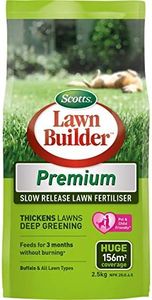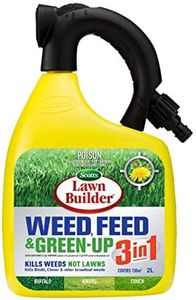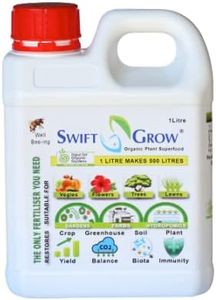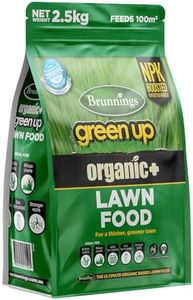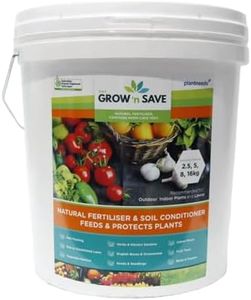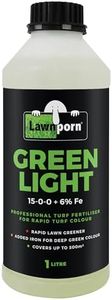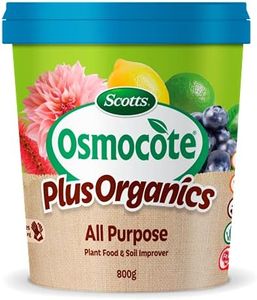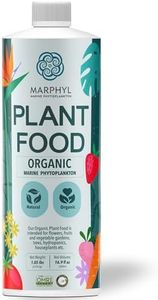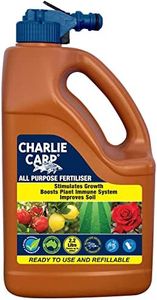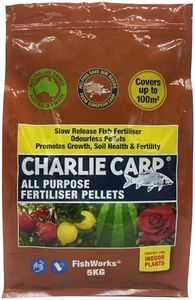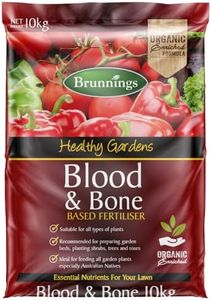We Use CookiesWe use cookies to enhance the security, performance,
functionality and for analytical and promotional activities. By continuing to browse this site you
are agreeing to our privacy policy
10 Best Organic Lawn Fertilizer
From leading brands and best sellers available on the web.Buying Guide for the Best Organic Lawn Fertilizer
Choosing the right organic lawn fertilizer is about promoting healthy, lush grass while also caring for the environment. Organic fertilizers work differently than synthetic ones: they release nutrients slowly, improve soil health, and are safer for kids, pets, and local wildlife. To find the best option for your lawn, it’s important to understand a few key aspects that impact effectiveness, ease of use, and environmental compatibility.Nutrient Ratio (N-P-K)The N-P-K ratio explains the percentage of nitrogen (N), phosphorus (P), and potassium (K) in your fertilizer. Nitrogen helps grass grow thick and green, phosphorus supports root strength, and potassium aids overall resilience. A higher nitrogen value is good for established, leafy lawns, while new lawns or those needing stronger roots benefit from more phosphorus. For most homeowners, a balanced ratio like 5-5-5 works for general feeding, but established lawns usually need more nitrogen (such as 10-0-2). Pick a ratio based on what your lawn needs: leaf growth, strong roots, or resilience.
Source of IngredientsOrganic fertilizers can be made from plant-based, animal-based, or mineral-based materials. Plant-based fertilizers (like alfalfa meal) break down quickly and are great for a gentle boost. Animal-based options (like manure or bone meal) release nutrients steadily and add beneficial microbes to the soil. Mineral-based fertilizers (like rock phosphate) are slow-release but good for correcting soil deficiencies. Choose the type best suited to your preferences and soil needs; for example, if you want fast green growth, plant-based is suitable, but for long-term soil improvement, animal- or mineral-based might be better.
Release TimeThis refers to how quickly the fertilizer delivers nutrients to the lawn. Some organic fertilizers work very slowly, breaking down over weeks or months, while others act faster. Slow-release fertilizers are excellent for long-term lawn care and consistent growth but won’t show quick results. If your lawn needs a boost before a big event, find one with a portion of fast-acting ingredients. Otherwise, slow and steady is best for most situations and healthier for your soil and grass in the long run.
Form (Granular vs. Liquid)Organic fertilizers can come as granules, powders, or liquids. Granular forms are easy to spread over a large area and offer steady nutrient release. Liquids act more quickly and can be useful if you want fast results or need to treat specific spots. Choose granular for general feeding and ease, or liquid for quick corrections or small patches.
Certifications and SafetyLook for labels like 'OMRI Listed' or certifications verifying the fertilizer meets organic standards. These ensure your product is genuinely organic and free from harmful synthetic additives. If you have children or pets that use the yard, or if you care about environmental impact, always check for these certifications to ensure safety.
Odor and HandlingSome organic fertilizers, especially animal-based ones, can have a strong smell. This can be important if you plan to use the lawn soon after application or are sensitive to odors. If smell is a concern, seek out plant-based options or check reviews for odor complaints. Handling is another consideration: granules are less messy, while liquids or fine powders can require more careful application.
